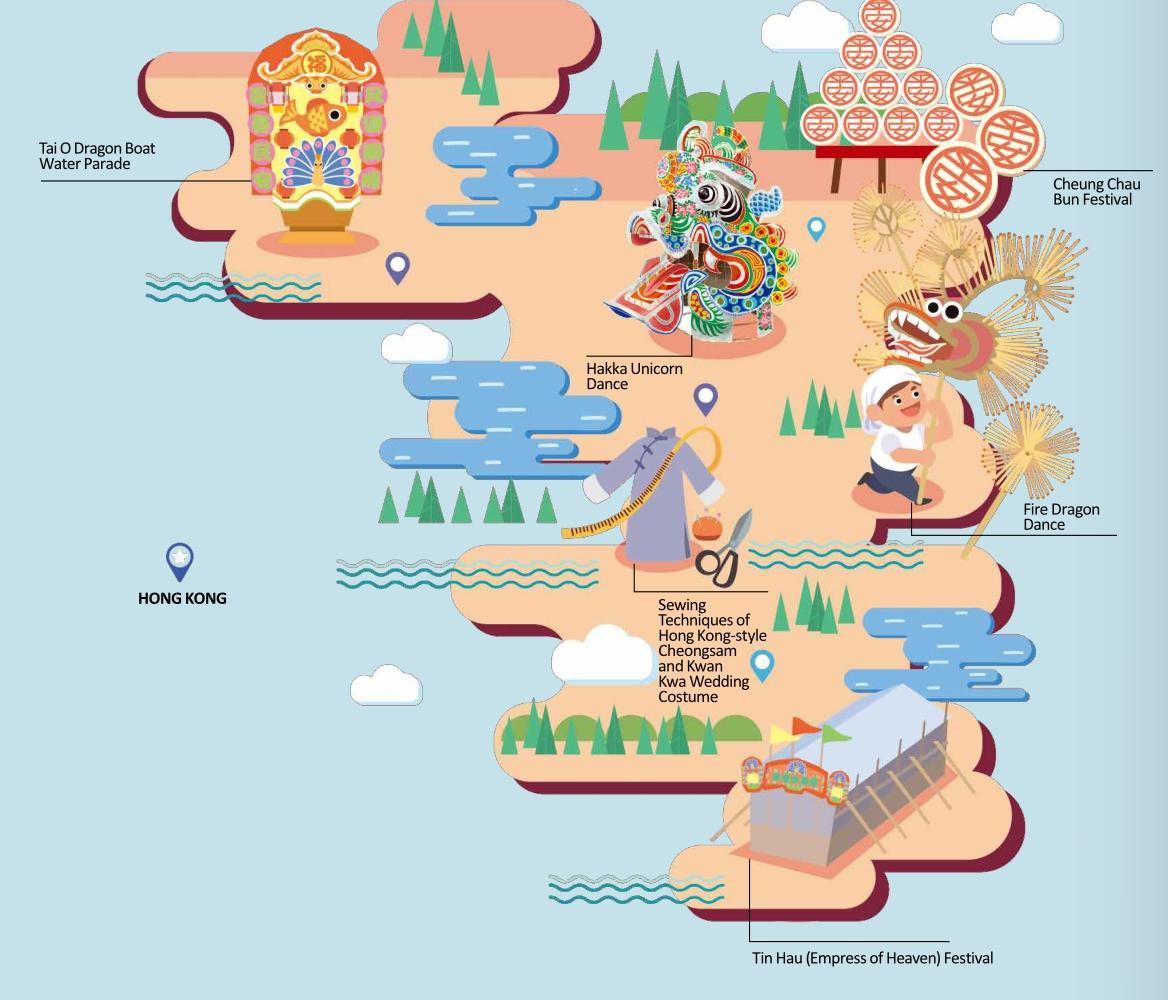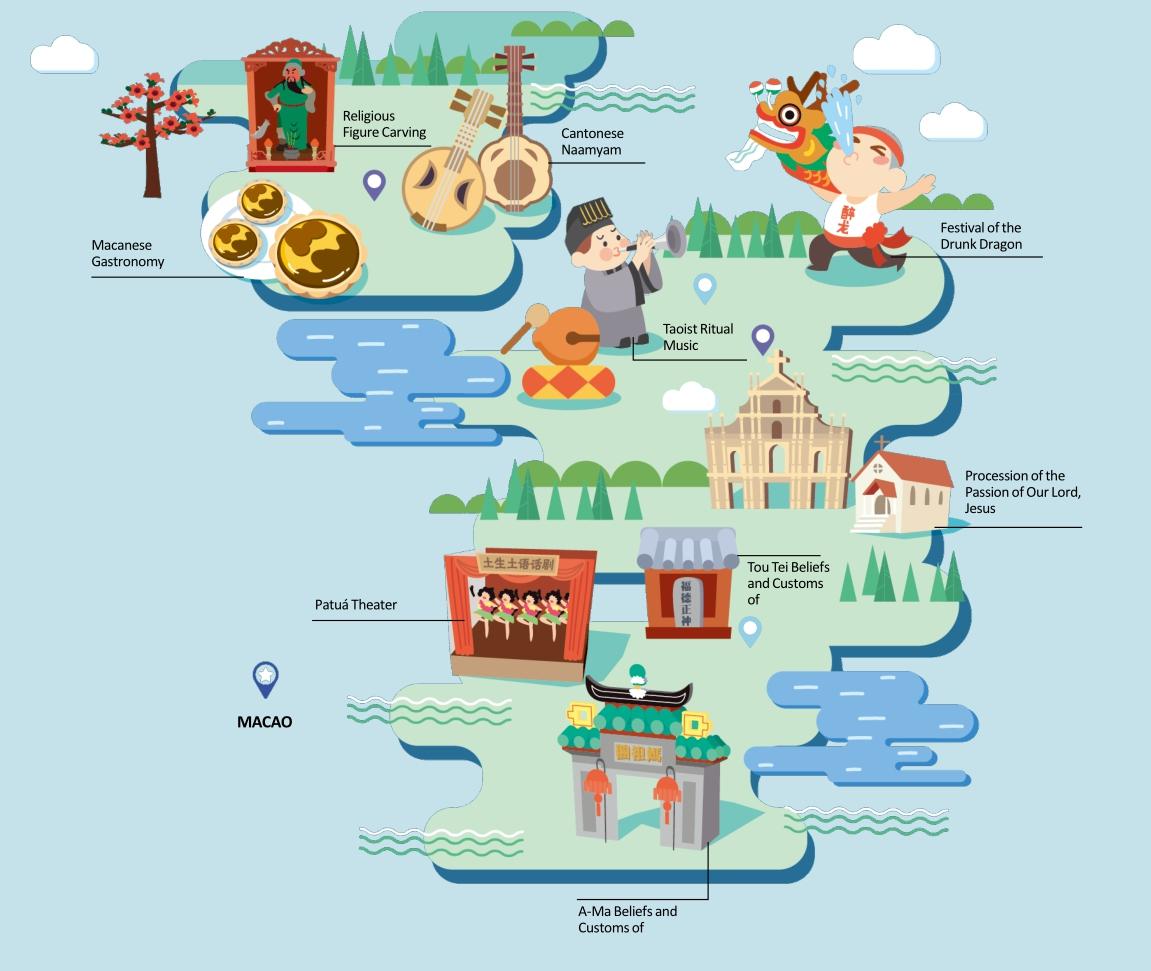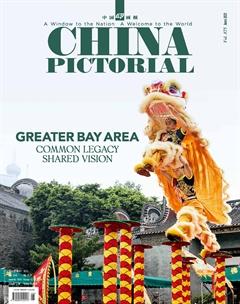Greater Bay Area Culture on the Intangible Cultural Heritage Map
by Wang Shuya
In recent years, as one of the most innovative city clusters in China and the world, the Guangdong-Hong Kong-Macao Greater Bay Area is being promoted.
Culture is the calling card and soul of a region. Guangdong, Hong Kong and Macao are connected by shared mountains and waters. The three places are also bound by a splendid intangible cultural heritage of the same origin.
The book Guangdong-Hong Kong-Macao Greater Bay Area Intangible Cultural Heritage Map documents 68 intangible cultural heritage items from the area in a“map legend” style with exquisite illustrations and concise text. It makes a strong case for reflecting heritage through illustrations. The heritage highlighted in the book mirrors the cultural connections binding the people of the three places as well as their expectations about life and various traditional rituals.
A representative of Lingnan culture, Guangdong culture boasts abundant intangible cultural heritage such as delicate and colorful embroidered handicrafts, mellow and sweet Jiujiang double-distilled rice wine, the Cantonese lion dance that has become one of the Chinese cultural symbols across the world, and the Duan Inkstone, one of Chinas four famous inkstones, which is produced in Zhaoqing, Guangdong.
Guangdong culture is known for enthusiasm, passion, openness and inclusiveness after its integration with farming culture, marine culture and overseas Chinese culture.
In the middle of the 16th century, Portuguese invasion forced Macao, once a small fishing village in Xiangshan County, Guangdong, to open to the world and gradually develop into an international trading port.
For more than 400 years, business people from Fujian, Guangdong and other regions of China settled in Macao and brought various cultures and folk customs with them, which evolved into various cultural heritages, including Cantonese Naamyam, a narrative folk singing, the craft of bamboo scaffolding, an essential construction endeavor requiring experienced builders, and the Festival of the Drunk Dragon, which maintains an old tradition of fish merchants and vendors, as well as tasty Macanese gastronomic delights. Macao has continued to maintain the root and soul of the intangible cultural heritage of the Greater Bay Area.

From the middle of the 19th century to the end of the 20th century, fast developing Hong Kong welcomed a wave of people relocated from the mainland, mostly from neighboring Guangdong. They started families in Hong Kong and brought many distinctive Lingnan folk customs such as the exciting Tai O dragon boat water parade, the three-night fire dragon dance, and the Piu Sik parade, which is part of the Cheung Chau Bun Festival, featuring children dressed in traditional costumes as famous figures. Ancient cultural traditions coexist with the ever-changing modern city in harmony.
Among the many Lingnan folk traditions, herbal tea and Cantonese Opera are shared by the trio of Guangdong, Hong Kong, and Macao. They were added to UNESCOs list of world intangible cultural heritage in 2006 and 2009 respectively through the three places joint efforts.
Cultural traditions represented by intangible cultural heritages serve as the foundation for the local cultural identity in the Greater Bay Area. Bay Area culture, which grows with the development of the Greater Bay Area, will serve as an important driving force for further economic and social development in the area.

